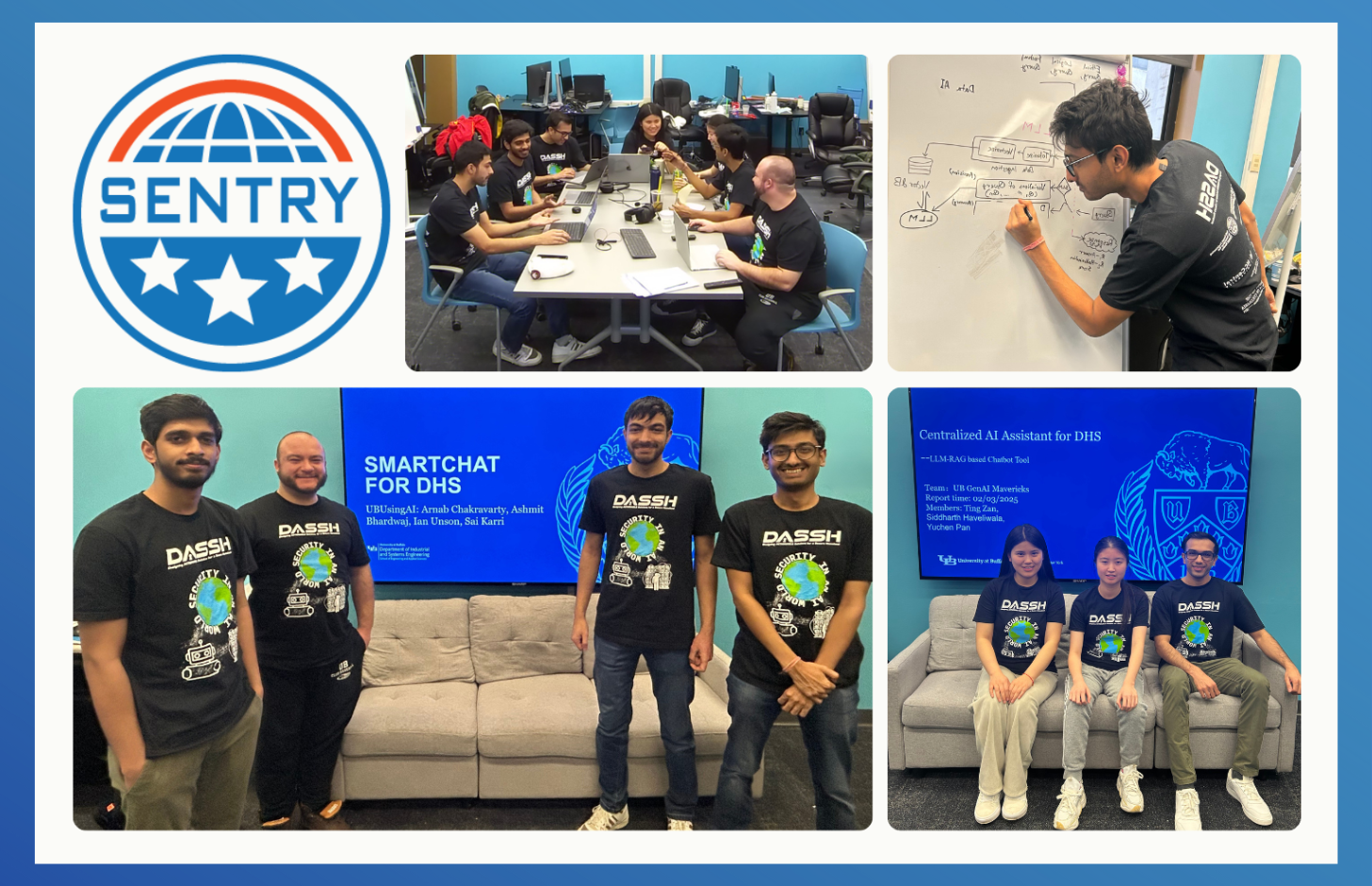


The 2025 DASSH (Designing Actionable Solutions for a Secure Homeland) Student Design Challenge, co-sponsored by SENTRY and the Center for Accelerating Operational Efficiency (CAOE), took place from February 28 to March 2, 2025. Over three intensive days, 160 students from 15 universities, forming 37 teams, collaborated to tackle some of the most pressing security challenges.
The three-day challenge kicked off with remarks from esteemed keynote speakers Julie Brewer, the acting Under Secretary for the Department of Homeland Security Science and Technology Directorate, and Chris Kraft, Deputy Chief Technology Officer for AI at DHS, sharing insights into the evolving role of AI in homeland security. After their motivational remarks, participants worked to develop interdisciplinary solutions to problem statements related to this year’s theme, “Security in an AI World.”
Problem Statement #1: How can we establish a broader comfort with AI to enhance its usage by DHS personnel and in society at large?
Problem Statement #2: How can DHS use AI, specifically Large Language Models, to improve DHS operations, particularly those that require significant staff time?
Problem Statement #3: How do we mitigate the potential for AI-enabled attacks on critical infrastructure?
Among the 37 participating teams, seven included SENTRY students, with two of these teams being awarded following their final presentations: Team BEC and UB GenAI Mavericks, who placed second and third, respectively, for their solutions to problem statement 2. These teams and their members are as follows:
Team BEC – Second Place, Problem Statement 2
UB GenAI Mavericks – Third Place, Problem Statement 2
Ian Unson, a SENTRY’s Student Leadership Council (SLC) member, competed on team UBUsingAI. This Student Design Challenge offered Ian a unique opportunity to explore solutions beyond traditional code-based approaches. “Not every solution we propose in the real world is based on code, so it’s essential to consider a variety of options,” he explained.
Experienced mentors, including former DASSH participants and industry experts, guided the student teams. Mentors from SENTRY included SLC members Nina Shamsi, Kevin Kapadia, Ani Ramesh, and Practitioner Advisory Board member Captain Russ Webster, each bringing valuable insights from their respective fields.
“Most teams were ‘stuck on start’ as to how their proposed technology solutions would be employed,” Captain Webster observed. By providing critical context from his career—including real-world applications of AI in Coast Guard search and rescue operations—he helped teams refine their approaches and recognize the operational value of their ideas. He emphasized the importance of mentorship in bridging the gap between technical expertise and practical implementation, helping the student teams refine their ideas and successfully navigate the competitive environment.
Competing teams prepared a virtual presentation to deliver their proposed solution to the judging panel, which consisted of security experts. The panel evaluated the solutions based on innovation, feasibility, and potential impact to select this year’s winners. The winning teams earned substantial cash prizes for their innovative solutions.
The DASSH challenge equips students with the skills necessary to address contemporary security issues and empowers them to think critically in the face of emerging threats. By engaging in this challenge, the next generation of homeland security professionals will be better prepared to devise practical solutions that enhance national safety and resilience, ultimately shaping a more secure future.

 7/8/2025
Blog Post
7/8/2025
Blog Post
 2/19/2025
Blog Post
2/19/2025
Blog Post
 2/18/2025
Blog Post
2/18/2025
Blog Post
Subscribe to our mailing list to receive SENTRY’s Newsletter, event updates, and other announcements.
Sign Up